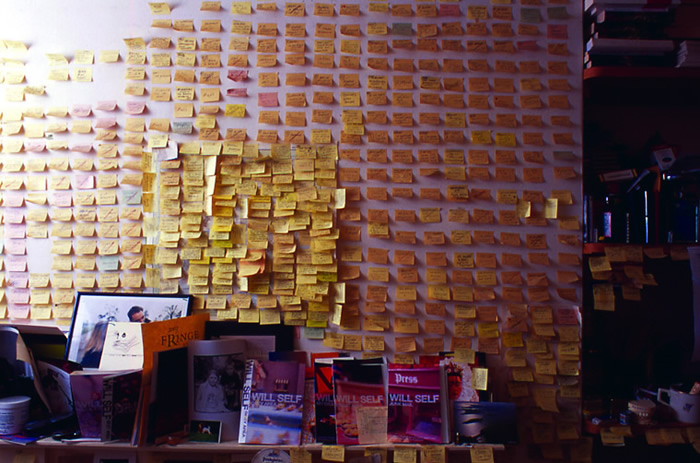In Moulin Rouge, John Huston’s 1952 biopic of the French painter and absinthe-bucket Henri de Toulouse-Lautrec, José Ferrer played the lead — entirely on his knees. The action begins in a Parisian bar, Toulouse-Lautrec sits supping his deathly green mouthwash — the barman polishes the glasses. Then the painter clambers down off his stool. Suddenly we’re in his point of view, looking up at the great zinc-topped escarpment of the counter the barman leans over, peers down at us, and speaks the first line of the movie: “So long, Toulouse!”
I resolved to walk to Toulouse in the spirit of Ferrer’s Oscar-winning performance by which I mean that for large portions of the journey I would be semi-recumbent on trains. First I would walk from my home in Stockwell, south London, to the Eurostar Terminal at Waterloo Station, then I’d entrain for the Gare du Nord. In Paris, I would stump across town to the Gare Montmartre and entrain once more for the far south.
In Toulouse, I would walk to my hotel, walk to the theatre where I was giving a reading with the chanteuse Marianne Faithful, walk to dinner, limp to bed, and in the morning I’d do the whole thing in reverse: a nice weekend’s stroll, covering some 1,300 miles. My wife, ever-sceptical of these peregrinations, always says the same thing: “Will you walk up and down the train?” She refuses to accept the musicality of my giant steps, their alternation of rhythmic striding and the fermata of the rail compartment.
The night before I left, I ran into Bobby. He got the walk to Toulouse. He grew up in Florida and used to water-ski across the Everglades, from lake to lake, his transit linking the Atlantic seaboard and the Gulf of Mexico (“We’d stop at amazing restaurants to eat fried chicken and gumbo”).
It was a dullish morning in London and rain threatened. Down by the Vauxhall railway arches the late-night revellers at Fire were punching the air, trying to KO the new day. Along the Albert Embankment, it was debatable that earth had not anything to show more fair. On the 6.37am train to Paris, the stewardess was chatty: they’re moving the terminal to King’s Cross and it’ll make her trip to the trip that’s work a grinding urban commute. It will render my walking tours of Paris equally unappealing, with all that London to march through before I reach the Boulevard de Magenta. The 50km through the Channel Tunnel has been walked, of course — by a Russian 36-year-old in 1998. But he was on his way to join the Foreign Legion and not officially sanctioned, a fugitive, on his knees — metaphorically — and what fun is that?
Aeolus was tossing buckets against the train windows in England — and then in France. But the drizzle was light as I strode away from the Gare du Nord, making for the Seine. I’d eschewed the map to give myself the delusion I knew my way around — or, perhaps to make the walk seem more like a Situationist’s aimless Dérive. I cut off Magenta before the Boulevard de Strasbourg and headed south down Rue du Faubourg-St Denis. As ever with these intermittent walks, the two cities had been kicked into one by my boots: London was exoticised — while making Paris seems ineffably mundane. I liked that. I liked the way the Porte Saint-Denis had all the historical resonance of a five-bar gate.Naturally I got lost around Les Halles, but then recovered myself to saunter across the Pont Neuf, through Saint Germain and up the Rue de Rennes. A swift espresso, priced at euro6, and it was into the uglification of the Gare Montmartre.
In Toulouse I left the station and headed along the Boulevard Pierre Sémard, which bordered a canal, then turned down the Allée Jean Jaurés, a wide, dull boulevard that debouched into the charming little Place Wilson, where I found a grandiose monument to the Occitan poet Pierre Goudouli. Ah, French urban place names! Where else in the world can you go from martyred Communist trade-union leader to socialist premier to US president, all within 40 minutes. From there I trod on the revolutionary Frenchman who was the US’s greatest friend — Rue Lafayette — until I reached the prosaic Place Capitole and checked into the Crown-Plaza.
That evening, at dinner in a brasserie on the Place Wilson, my friend François Ravard told me of the amazing sight he had witnessed that afternoon: a float of Gay Pride marchers being drawn through Toulouse by a melancholy French peasant sporting an Asterix moustache and driving a tractor. Meanwhile, another of our fellow diners informed us that the Charlemagne Regiment (a French division of the Waffen SS) were holding their annual reunion in a town an hour’s drive west of Toulouse. Such strange ambulatory antics! They made my own homage to José Ferrer seem positively banal.
21.07.07
